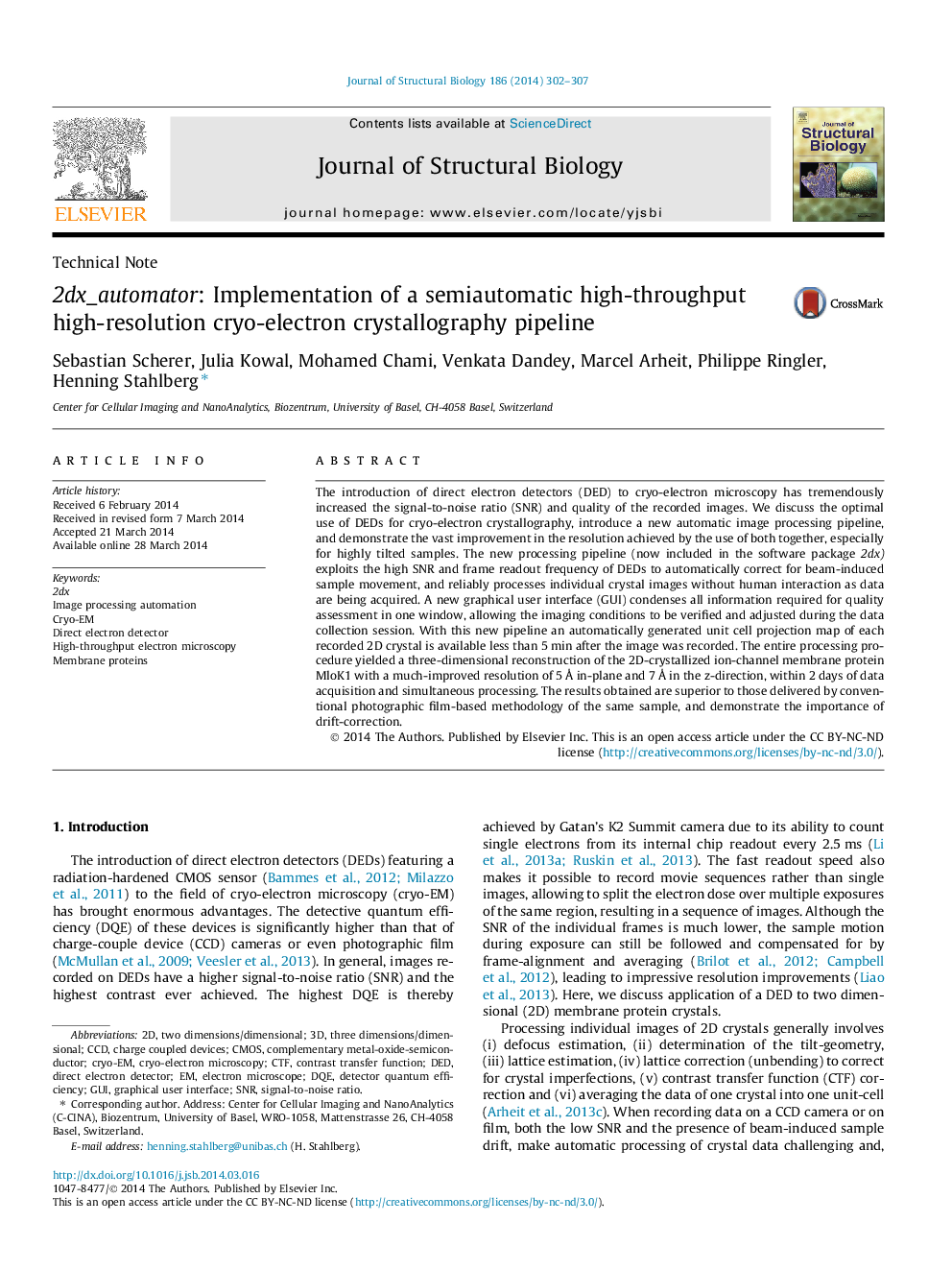| Article ID | Journal | Published Year | Pages | File Type |
|---|---|---|---|---|
| 5914183 | Journal of Structural Biology | 2014 | 6 Pages |
The introduction of direct electron detectors (DED) to cryo-electron microscopy has tremendously increased the signal-to-noise ratio (SNR) and quality of the recorded images. We discuss the optimal use of DEDs for cryo-electron crystallography, introduce a new automatic image processing pipeline, and demonstrate the vast improvement in the resolution achieved by the use of both together, especially for highly tilted samples. The new processing pipeline (now included in the software package 2dx) exploits the high SNR and frame readout frequency of DEDs to automatically correct for beam-induced sample movement, and reliably processes individual crystal images without human interaction as data are being acquired. A new graphical user interface (GUI) condenses all information required for quality assessment in one window, allowing the imaging conditions to be verified and adjusted during the data collection session. With this new pipeline an automatically generated unit cell projection map of each recorded 2D crystal is available less than 5Â min after the image was recorded. The entire processing procedure yielded a three-dimensional reconstruction of the 2D-crystallized ion-channel membrane protein MloK1 with a much-improved resolution of 5Â Ã in-plane and 7Â Ã in the z-direction, within 2Â days of data acquisition and simultaneous processing. The results obtained are superior to those delivered by conventional photographic film-based methodology of the same sample, and demonstrate the importance of drift-correction.
